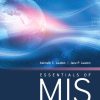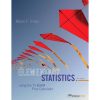Test Bank for Scientific American Nutrition for a Changing World 1st Edition by Pope
$35.00 Original price was: $35.00.$26.50Current price is: $26.50.
Test Bank for Scientific American Nutrition for a Changing World 1st Edition by Pope
Instant download Test Bank for Scientific American Nutrition for a Changing World 1st Edition by Pope pdf docx epub after payment.

Product details:
- ISBN-10 : 1319045154
- ISBN-13 : 978-1319045159
- Author: JAMIE POPE
In this breakthrough introductory text, educators Jamie Pope and Steve Nizielski, and science writer, Alison McCook use real stories—about real people and real science—to teach the basic concepts of nutrition. Each chapter reads like Scientific American-style article, with compelling reporting and beautifully designed infographics providing a context for the scientific content. Unique chapters on timely topics (diabetes, cardiovascular disease, plant-based diets, fat- and water-soluble vitamins, dietary supplements, and the college years) exemplify the book’s thoroughly contemporary approach to nutrition science.
Nutrition for Changing World is also the only textbook for the course to offer automatically graded dietary analysis activities using the USDA’s open-access SuperTracker. These exercises are in LaunchPad, a dedicated online course space that compliments the text to provide students with a fully integrated print/digital learning experience.
For those courses that explore the micronutrients by function in the body, the first edition includes a 10-page Infographic that arranges micronutrient coverage by nutrients involved in metabolism, antioxidant function, bone health, and blood health. This rich appendix (Appendix A3) includes embedded questions for student reflection and cross-references to the vitamins and minerals chapters. The Appendix is also available in PowerPoint for instructor use.
Table of contents:
Chapter 1. The Science and Scope of Nutrition. Eating for a Lifetime: A new field in nutrition research is revealing surprising details about how food affects our genes.
Introducing the science of nutrition
Food provides nutrients and energy
What is malnutrition?
Nutrient intake recommendations
Energy Recommendations
Nutrition Science in Action
Credible Sources of Nutrition Information
Health Goals for Americans
Assessing the North American Diet
Chapter 2. Healthy Diets
From Desert to Oasis: Are “”food deserts”” preventing millions of Americans from eating well?
Healthy diets feature variety, balance, adequacy, and moderation
Understanding the nutrient density and energy density of foods
“Limit these: solid fats and added sugars
Dietary Guidelines for Americans
Understanding the labeling on food
Menu labeling
Chapter 3. Digestive System and Digestive Disorders
A Gut Feeling: Is gluten really all that bad?
Overview of the Digestive Process
Overview of Mechanical and Chemical Digestion
The Path of Digestion from the Mouth to the Large Intestine
The Role of Bacteria in the Gastrointestinal Tract
Digestive Disorders
Irritable Bowel Syndrome (IBS) and Inflammatory Bowel Disease (IBD)
Awareness of Celiac Disease Is Growing
Chapter 4. Carbohydrates,
“Whole Grain” Hype: Can science help us navigate the perils of the cereal aisle?
What Are Carbohydrates?
How Grain-Based Foods Measure Up
The Digestion of Carbohydrates
Added Sugars
Dental Caries
Sugar Alternatives
Understanding Fiber
Carbohydrate Intake Recommendations
NEW story!
SPOTLIGHT A: A Global Pandemic: A projected 629 million people in the world will be living with diabetes by year 2045
What Is Diabetes Mellitus?
Type 2 Diabetes
Diabetes Treatment and Prevention
NEW story! Chapter 5. The Lipids
Is fish really brain food? Dietary lipids can profoundly affect our risk of developing dementia later in life.
Dietary Fat
Overview of the Lipids
Lipid Digestion and Absorption
Lipoprotein Transport
Essential Fatty Acids
Trans Fats
Current Fat Intake and Recommendations
NEW! SPOTLIGHT B: Lipids in Health and Disease
Death in Bogalusa: From tragic deaths in a southern town, insights into heart disease.
Atherosclerosis and Cardiovascular Disease
Risk Factors for Cardiovascular Disease
A Heart-Protective Diet
Fat Intake and Health—Beyond Cardiovascular Disease
Chapter 6. Protein
How much of a good thing do we need? Experts consider how much protein is best for us all.
Recommendations for Protein Intake
Protein Synthesis
Digestion and Absorption of Proteins
Varied Functions of Protein
Protein Turnover and Nitrogen Balance
Seniors May Benefit from Increased Intakes of Protein
Protein Sources
Protein Quality
Protein-Deficiency
High-Protein Diets
NEW! SPOTLIGHT C: Plant-Based Diets
Pass the plants, please: What does a Spanish study say about the benefits of following a Mediterranean-like diet?
Vegetarian and Semi-Vegetarian Diets
Benefits of a Diet Rich in Plant Foods
How Cancer Develops
Benefits of Phytochemicals
Nutritional Considerations and Concerns Associated with Plant-Based Diets
Plant-Based and Vegetarian Guidelines
The Mediterranean Diet
NEW story! Chapter 7. Fat-soluble Vitamins
Biofortication in Bangladesh: Can a public health crisis be solved with rice?
Introducing the vitamins
Properties of fat-soluble vitamins
Vitamin A
Antioxidants Protect Against Damage from Free Radicals
Vitamin D
Vitamin E
Vitamin K
Chapter 8. Water-soluble Vitamins
It’s Not A Germ: Pioneering research uncovers vitamin deficiency diseases
Characteristics of the water-soluble vitamins
The B-vitamins
Choline
Vitamin C
Chapter 9. Major Minerals and Water
Potassium Power: Eating a diet low in sodium and rich in potassium may be protective of hypertension
Overview of the minerals
Mineral absorption and bioavailability
Minerals in our food
Calcium, magnesium and phosphorus have diverse structural roles in the body
Sulfur is a component of proteins
Sodium, potassium and chloride maintain fluid balance in the body
Water
Water intake recommendations
Chapter 10. Trace Minerals
Small Amounts with Big Importance: Is Iodine Decificiency a Thing of the Past?
Introducing the trace minerals
Iodine: Sources and Functions
Iron
Zinc
Copper
Selenium
Flouride
Other Trace Minerals: Manganese, Molybdenum, and Chromium
Ultratrace minerals
NEW! SPOTLIGHT D: Supplements
Supplements, herbs, and functional foods: Surprising studies on the value of vitamin supplements.
What Are Dietary Supplements?
Regulations of Dietary Supplements
Understanding Supplement Labels
Are Dietary Supplements Harmful?
Functional Foods
Chapter 11. Energy Balance and ObesityThe Sitting Disease: Understand the causes and consequences of obesity.
Energy in, energy out
The biology of hunger
A NEAT cause of weight gain
Lifestyle and energy balance
Weight loss recommendations
Chapter 12. Nutrition and Fitness
Eating to Win: Research suggests that when athletes eat may be just as important as what they eat.
Components of fitness
Fueling the body
Measures of exercise intensity
Dietary carbohydrates for endurace exercise
Female athlete triad
Body building
Hydrating the athlete
Physical fitness: not just for athletes
Chapter 13 Nutrition through the College Years
Determinants of eating behavior, disordered eating, and alcohol: How food choices are influenced by social norms.
Growth, Development, and Nutrient Requirements in Late Adolescence
Calcium
Iron
Determinants of Eating Behavior
Eating Challenges on Campus
Eating Disorders
Alcohol
Spotlight E: Pregnancy, Lactation, and Infancy
Nourishing mother and baby: New research suggests that delaying cord clamping after birth preserves iron status.
Changing Nutritional Needs
Energy and Nutrient Needs during Pregnancy
A Healthy Pregnancy
Food Safety
Postnatal Nutrition
Nutrition during Lactation
Formula Feeding
Nutrition for the Growing Child
NEW! SPOTLIGHT F: Childhood Nutrition
Food allergies and intolerances: As paradoxical as it may seem, could dirt and germs make children healthier for life?
What Are Children Eating?
Nutritional Recommendations for Children
Nutrients of Concern in Childhood
Childhood Obesity
Food Allergies
Growth and Development in Childhood
NEW! SPOTLIGHT G: Nutrition and the Aging Adult
Live long and prosper: Can you eat your way to a longer, healthier life?
What Happens When We Age?
Life Expectancy and Lifespan
Blue Zones
Energy Needs and Physical Activity
Special Nutritional Concerns for Older Adults
Nutrient Recommendations for Seniors
Maintaining Physical Strength for a Lifetime
Blue Zone Secrets
NEW! Chapter 14. Global Nutrition: Food Security and Sustainability
Feeding the world now and in the future; How will we combat global hunger while we promote food security and sustainability?
Food and Nutrition Security
Sustainability
How Are Organic Foods Different from Conventional Foods?
NEW! SPOTLIGHT H: Food Safety
How cantaloupe turned lethal; Safe food-handling practices from farm to table can dramatically reduce the risk of foodborne illness.
A Brief History of Food Safety in America
Foodborne Intoxication and Infection
Engineering Food Safety: HACCP and Irradiation
Food Safety and Modernization Act
Food Safety in the Home
Appendices
People also search:
Scientific American Nutrition for a Changing World 1st Edition
Scientific American Nutrition for a Changing World 1st Edition pdf
Scientific American Nutrition for a Changing World
science magazine vs scientific american
how accurate is scientific american
nutrition for a changing world pdf free
Related products
Test Bank
Test Bank for Essentials of Business Law and the Legal Environment, 11th Edition: Richard A. Mann
Test Bank
Test Bank for Clinical Immunology and Serology A Laboratory Perspective, 3rd Edition: Stevens











